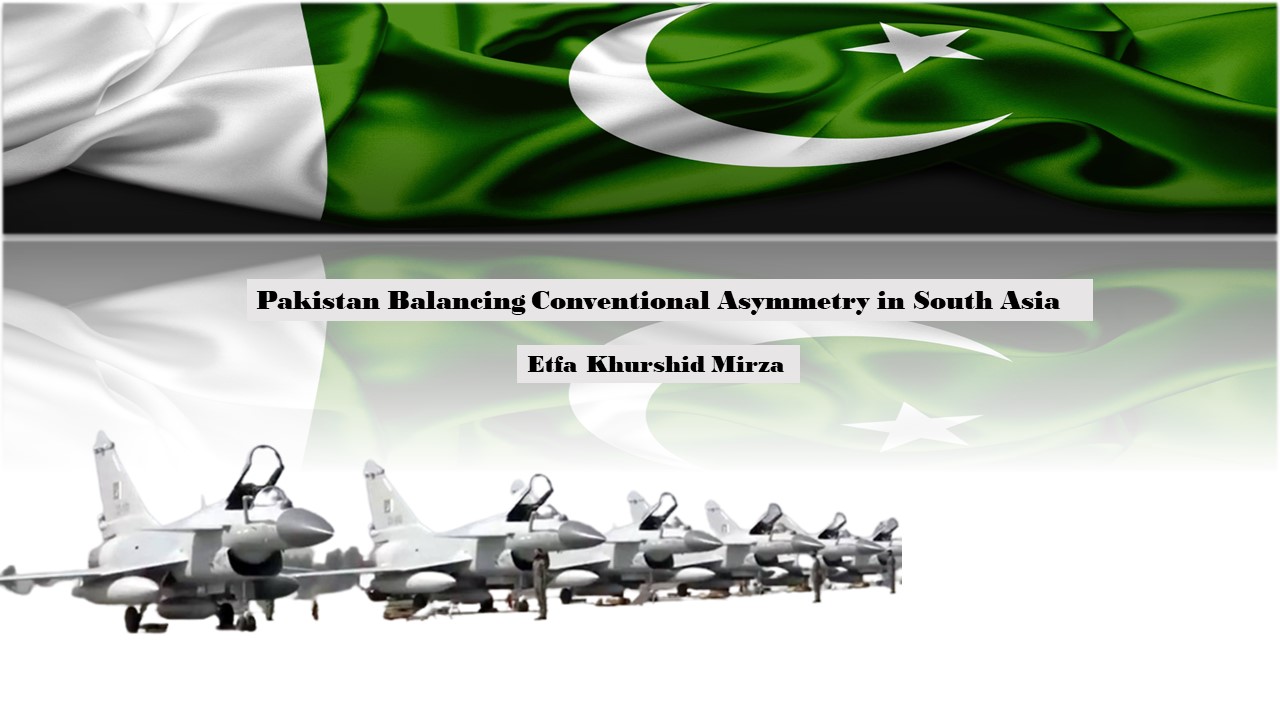While the global order is evolving, the United States and its allies are striving to compete with the rising power of China. In order to keep itself relevant in global politics, India is actively participating in these alliances and modernising its military which will eventually lead the region into an arms race. Due to conventional asymmetry, Islamabad needs to concentrate on its defence capability and modernise where necessary as well, especially given long-standing conflicts with its eastern neighbour.
In light of the delivery of Rafael fighter jets to New Delhi, Islamabad recognised the requirement to update its fighter aircraft fleet. In December 2021, Pakistan Air Force inducted 14 JF-17 Thunder Block III, a joint production of Pakistan and China, into PAF’s fighter fleet. In addition to that, it inducted six advanced multirole fighter aircraft J-10Cs from China in March 2022. 25 of the latest fourth-generation aircraft will be delivered to Pakistan. The purpose is to address the security imbalance in the region created due to Indian military modernisation.
After February 2019, the role of airpower significantly increased between India and Pakistan, and the acquisition of Rafael in 2020 placed the former in an advantageous position. To achieve parity, Pakistan had two options – match numbers or technology. In nuclear deterrence, parity in numbers is not important, however, in conventional deterrence, it does matter. Pakistan may not be able to achieve parity in numbers vis-à-vis India due to its strained economy, but, parity in terms of technology is possible. With particular reference to Rafael, Pakistan is required to procure an aircraft that may not be as advanced but is somewhat close to that in order to deter an evolving Indian threat.
When it comes to acquiring military technology, Pakistan faces two main challenges – denial of technology from the West, and a fragile economy. Keeping these in mind, China is the most suitable option for Pakistan and the acquisition of J-10Cs has been a wise decision. It offers a number of advantages. First, easy accessibility of technology due to Pak-China defence cooperation. In the recent past, the Pakistan Navy acquired the first type 054A/P frigate in January 2022, while in October 2021, the Pakistan Army inducted the HQ-9/P air defence missile system purchased from China. Second, it is economically viable for Pakistan. Third, Pakistan has good experience in handling Chinese technology in general and fighter aircraft in particular and is a leading buyer of its technology. In the past, Chinese FT-5, A-5, F-6 and F-7 aircraft were part of PAF’s inventory. Currently, Pakistan is operating F-7PG, and JF-17 Thunder Block II and its upgraded version III (a joint production of Pakistan and China). So, having experience operating multiple Chinese fighter aircraft, one can conveniently say that PAF will be very comfortable handling this newly acquired J-10C. Another important factor is, that due to being an Original Equipment Manufacturer (OEM), Pakistan can carry out modifications to the aircraft depending upon its operational requirements.
On the other hand, the Indian Air Force (IAF) chose to acquire a technology that is diverse in nature, i.e., the French-made Rafael. While there are advantages of having a technology that gives an edge over the adversary in terms of equipment and variety of weapons, there are drawbacks of supportability and interoperability with other systems as well. Other aircraft IAF is using are the Russian Sukhoi Su-30, MiG-29, and French Mirage 2000. One challenge that IAF faced during the February 2019 crisis was the integration of its fighter fleet with one another to depict situational awareness of the battlefield. This will have similar challenges in the future as well due to the diversity of aircraft it has. Pakistan will have an edge over India in this regard. Having J-10C and JF-Thunders, there will be no issues of interoperability or integration with the defence and airborne early warning systems.
When it comes to the missile systems, with Rafael, India acquired MICA and Meteor – Beyond Visual Range (BVR) missiles. Having BVR capability provides an edge to shoot down an enemy’s aircraft while flying in its own territory. The J-10C, equipped with PL-15, a BVR missile and a variety of stand-up munitions, makes it an effective counter to the aforementioned Indian missiles.
Finally, with the evolving threat in the region, it is not only advanced technology that matters but the employment of such technology on a battlefield. In this context, a country with an impactful employment strategy will have an advantage over the other and that’s what we witnessed in February 2019 – it was the strategy that rendered PAF a historic victory.
Keeping in view the above facts, the arms race that was initiated by the IAF created conventional asymmetry in the region that PAF has tried to balance with the induction of JF-17 Thunder Block III and J-10Cs. However, this is only one element of military modernisation. The threat posed by the modern defence system purchased by India – the S-400 missile defence system – and the development of precision strike weapons like hypersonics also needs to be tackled.
Etfa Khurshid Mirza is a Researcher at the Centre for Aerospace & Security Studies (CASS), Islamabad, Pakistan. Her area of interest is warfare and emerging technologies. She can be reached at [email protected]m.





